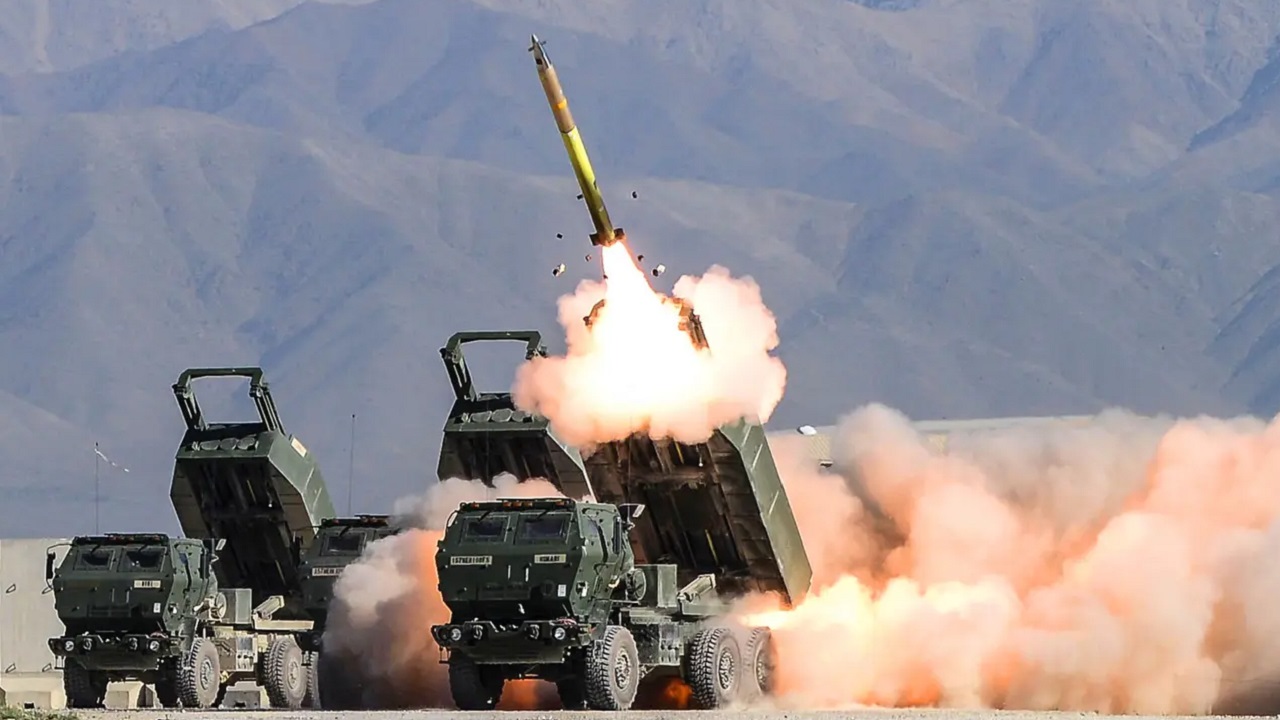HIMARS Changed Everything in Ukraine – Taking out enemy barracks, blowing up ammunition depots, and attacking command centers, these are just a few of the jobs carried out by HIMARS in Ukraine. The M142 High Mobility Artillery Rocket System is a peach.
It has shown the Russians that it is a weapon to fear. HIMARS has made the Ukrainian autumn counter-offensive in 2022 a success and it has worked to create violent action against the occupiers.
(Subscribe to Our YouTube Channel Here. Check out More 19FortyFive Videos Here)
How Is HIMARS Being Used?
Russia is an artillery power, and it relies on large ammunition dumps to supply its howitzers. When HIMARS arrived on the scene in June, the batteries began to blast away at the shell storage sites creating huge explosions.
This reduced the number of shells Russian artillery could fire each day. Then, based on that success, the Ukrainians decided to target Russian command centers. They lit up portions of the headquarters for the 20th Motorized Rifle Division and 106th Airborne Division in July, according to analysts from the Foreign Policy Research Institute.
What Is HIMARS?
HIMARS is a rocket launcher mounted on a five ton truck. The launcher holds six rockets that can be fired quickly at targets up to 50 miles away. These are GPS-guided. Three crewmen operate the system.
Ukrainian troops were able to soak up knowledge of HIMARS in training and successfully take their skills to the battlefield.
HIMARS Achieving Surprise and Momentum
HIMARS allowed Ukrainian troops the element of surprise when they first started using the multiple rocket launchers.
Ukraine was able to seize the initiative and momentum in the fight. They also forced the Russian army to adjust its own tactics in the war.
Hit the Russians in the Vulnerable Rear Echelon
Conventional artillery strikes also targeted Russian artillery sites that reduced the occupier’s ability to create counter-battery fire that could have threatened HIMARS. The Ukrainians also used HIMARS to shape the battlefield before the counteroffensive began.
Russia’s rear lines were vulnerable to this attack. With HIMARS, Ukraine was able to take back Kherson and Kharkiv.
Newfangled Targeting Methods
Ukraine uses drones, counter-battery radar, and radio transmission targeting to send HIMARS rockets to stunning effect. The last notable HIMARS attack happened on January 1 when Russian soldiers were resting in a vocational school building in the eastern Donetsk town of Makiivka.
Their location was tracked by Ukraine using a system called Software Defined Radio that detected enemy radio communication including 5G cell phone conversations and Bluetooth to determine their location. Once this happened the Ukrainians fed the location data to the HIMARS targeting system and the rockets blew up the building killing scores of Russia soldiers.
Russia Has to Change Tactics
Russian forces had previously thought they were making progress in adjusting to HIMARS fire. They improved defenses around their command centers. They put supply facilities out of range of HIMARS and they tried to use decoys to fool the Ukrainian targeting mechanisms. This activity showed that Russians were afraid of the long-range and accurate rockets.
Americans Are Pleasantly Surprised at HIMARS Effectiveness
The U.S. military is satisfied by the performance of HIMARS. Secretary of Defense Lloyd Austin said in October that HIMARS “changed the dynamics” of the war. Austin said the Ukrainians were using HIMARS the “right way” by targeting Russian logistics chains in the rear and prepping the battlefield for further attacks by Ukrainian maneuver units.
But Even Longer Range Missiles Are Needed
These weapons can fire the MGM-140 Army Tactical Missile System (ATACMS) surface-to-surface missiles. These have a range of 186 miles.
So far, the Americans have not supplied the ATACMS to Ukraine. Senior Advisor to Human Rights First Ben Hodges, a retired U.S. Army general, is advocating for ATACMS to be supplied to the defenders.
Hodges said before the new year that ATACMS is “exactly what they need right now.” Hodges believes the Ukrainians could fire the missile deeper into Crimea where Russia has moved its supply centers.
HIMARS changed the war, but Russia has adjusted its logistical practices. Russia is fearful of the system as it has forced the occupiers to react on its heels instead of moving forward with their own offensive operations. The next weapon the Ukrainians need is ATACMS, which would elongate the range of aerial attacks.
For this reason, the United States is likely to make the missile available to the defenders sometime this year.
Author Expertise and Experience: Serving as 19FortyFive’s Defense and National Security Editor, Dr. Brent M. Eastwood is the author of Humans, Machines, and Data: Future Trends in Warfare. He is an Emerging Threats expert and former U.S. Army Infantry officer. You can follow him on Twitter @BMEastwood. He holds a Ph.D. in Political Science and Foreign Policy/ International Relations.

